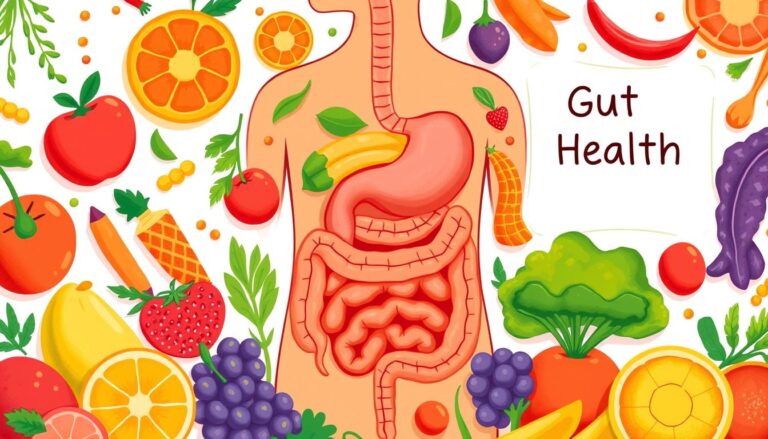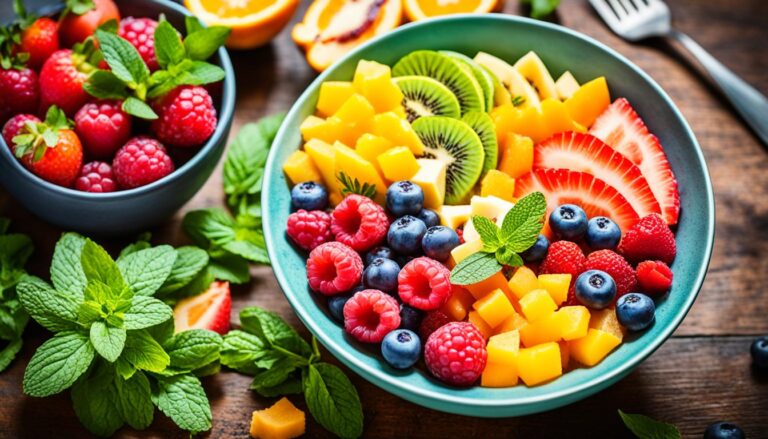What is the best way to lose weight? Most adults in the United States ask this at some point. The honest answer is simple but not easy to pursue sustainable weight loss with a modest calorie deficit dense meals regular exercise and steady habits that you can keep for life.
Authoritative guidance matters. The Centers for Disease Control and Prevention and the National Institutes of Health note that losing about 1–2 pounds per week is a safe, steady pace. This aligns with the best weight loss strategies because it protects muscle, supports energy, and is far easier to maintain.
Your plan should fit you. Medical history, daily schedule, culture, budget, and access to care in the United States all shape the best path. We will connect U.S. weight loss guidelines to practical steps you can use right away at home, the gym, or on the go.
In the sections ahead, you will learn how metabolism and hormones influence results, how to build meals that keep you full, and why balanced training works.
We will also cover whether drinks and pills help what medical options exist and how a weight loss calculator can tailor targets for sustainable weight loss. This article is educational and does not replace advice from your primary care clinician, a registered dietitian, or a certified trainer.
Key Takeaways
- The best weight loss strategies prioritize a modest, consistent calorie deficit and real-food meals.
- U.S. weight loss guidelines from the CDC and NIH support a safe rate of 1–2 pounds per week.
- Sustainable weight loss blends nutrition, strength and cardio sleep, and stress control.
- Personalization matters: adjust for health conditions preferences, and access to care.
- Evidence beats hype: focus on habits first, then consider vetted tools and medical options if needed.
- Use data progress appetite, and energy to refine your plan over time.
Understanding Sustainable Weight Loss and How It Works
Sustainable change starts with how your body uses energy. Your daily choices shape energy balance and that balance drives shifts in body mass over time. A steady plan supports realistic weight loss without extreme rules or crash tactics.
The science of calorie deficit and metabolism
Weight changes follow energy balance when intake is lower than output a calorie deficit prompts the body to tap stored fuel.
Your metabolism and total daily energy expenditure include basal metabolic rate the thermic effect of food exercise, and non exercise activity. Protein helps protect lean tissue and supports thermogenesis during a deficit.
Prolonged dieting can trigger adaptive thermogenesis, which slightly lowers energy use and may slow loss. Smaller, consistent deficits and regular movement reduce the risk of sharp slowdowns. Overly aggressive cuts can cost muscle, while resistance training helps maintain it.
How hormones sleep and stress impact weight loss
Hormones steer hunger and fullness. Leptin tends to fall with fat loss, while ghrelin can rise, so meals feel less satisfying. As fitness improves, insulin sensitivity often gets better especially with strength and aerobic training, which supports steadier blood sugar and appetite control.
There is a clear link between sleep and weight loss. Short sleep raises appetite cues and weakens insulin action which can lead to higher intake. Ongoing stress and cortisol spikes may drive cravings for calorie dense foods and expand central fat stores. Mindful breathing, walks, and strength work help blunt stress signals.
Setting realistic timelines and expectations
A steady pace supports realistic weight loss for most adults, often about 0.5–1% of body weight per week. Early drops can be water from changes in carbs or sodium, so look at four-to-eight-week trends. Normal plateaus may call for small shifts in calories, protein, training, or daily steps.
Medical factors can shape the rate of change, including hypothyroidism, PCOS, and some medications. Track habits, not just the scale, and make adjustments grounded in energy balance and metabolism rather than drastic cuts.
You may like to read: Top Vitamin B1 Food Sources for a Healthy Diet
Building a Smart Diet Plan for Weight Loss
A practical diet plan for weight loss balances protein, produce, and smart carbs you enjoy. Keep portions clear, aim for steady energy, and use simple meal prep habits. The goal is consistency, not perfection.
Structuring meals with protein fiber healthy fats and complex carbs
Aim for a high-protein diet with 20–40 grams per meal to protect lean mass and curb hunger. Good picks include chicken breast salmon tofu tempeh Greek yogurt eggs, and cottage cheese.
Target 8–10 grams of fiber intake per meal from vegetables fruits, beans, lentils and whole grains. This supports fullness and steady blood sugar. Hydrate with water seltzer or unsweetened tea.
Include healthy fats like extra virgin olive oil, avocado, nuts, and seeds in modest portions. Base carbs on activity level favoring complex carbohydrates such as oats, quinoa, brown rice sweet potatoes, and whole grain bread for long lasting fuel.
Sample 7 day diet plan for weight loss flexible and macro friendly
Use these macro friendly meals as a template. Adjust portions to match your calorie target and training schedule. Rotate proteins and produce to keep taste and variety high.
| Day | Breakfast | Lunch | Dinner | Snack Options | Protein Focus g | Fiber Focus g | Carb Type | Fat Source |
|---|---|---|---|---|---|---|---|---|
| Mon | Greek yogurt, berries, chia | Grilled chicken salad, olive oil vinaigrette | Baked salmon, quinoa, roasted broccoli | Protein shake with apple and peanut butter | 30–40 | 10–12 | Complex carbohydrates | Olive oil, chia |
| Tue | Veggie omelet, whole-grain toast | Lentil soup, side salad | Turkey meatballs, brown rice, green beans | Cottage cheese with pineapple, carrots with hummus | 30–40 | 9–11 | Complex carbohydrates | Olive oil, hummus |
| Wed | Overnight oats, whey, flaxseed | Tuna salad wrap, leafy greens | Tofu stir-fry, mixed vegetables, brown rice | Hard-boiled eggs banana | 30–35 | 8–10 | Complex carbohydrates | Flaxseed, avocado |
| Thu | Protein smoothie, spinach, blueberries | Quinoa bowl, black beans, salsa | Grilled shrimp, farro, and asparagus | Greek yogurt nuts | 30–40 | 10–12 | Complex carbohydrates | Avocado, nuts |
| Fri | Cottage cheese, sliced peaches, walnuts | Turkey chili, side slaw | Seared cod, sweet potato, kale | Protein bar orange | 30–35 | 9–11 | Complex carbohydrates | Olive oil, walnuts |
| Sat | Scrambled eggs, avocado, sprouted toast | Chicken burrito bowl, brown rice, veggies | Tempeh tacos, cabbage, pico de gallo | Greek yogurt berries | 30–40 | 10–12 | Complex carbohydrates | Avocado |
| Sun | Protein pancakes, raspberries | Chickpea salad, cucumbers, tomatoes | Beef sirloin, roasted potatoes, Brussels sprouts | String cheese pear | 30–40 | 8–10 | Complex carbohydrates | Olive oil |
Grocery list essentials and meal prep tips
Stock staples that support a diet plan for weight loss and macro friendly meals. Build your cart around lean proteins, produce whole grains, and healthy fats so choices come easy during busy weeks.
- Proteins: chicken breast, turkey salmon, tuna firm tofu, tempeh, eggs, Greek yogurt, cottage cheese.
- Legumes: black beans, chickpeas, lentils.
- Produce: leafy greens, broccoli, cauliflower, bell peppers, tomatoes, onions, berries, apples, bananas.
- Grains: oats, brown rice, quinoa, whole-wheat pasta, sprouted bread.
- Healthy fats: extra-virgin olive oil, avocado, nuts, seeds.
- Flavor: spices, salsa, vinegars, mustard.
- Beverages: water, seltzer, unsweetened tea, black coffee.
Use meal prep to cut friction: batch cook sheet pan proteins and vegetables, simmer beans in an Instant Pot, and pre-cook grains. Portion meals into containers for quick grab-and-go options that fit a high protein diet, planned fiber intake, and complex carbohydrates.
Pro tip: Keep a mix-and-match list on your fridge so you can pair proteins, produce, and healthy fats fast. This keeps momentum strong while staying flexible with macro-friendly meals.
Weight Loss Foods That Keep You Full and Energized
Choose meals that deliver steady energy and strong satiety. Build plates around high-protein foods and produce with low calorie density so portions look generous without excess calories. Simple swaps and mindful portion control make it easier to stay on track.
High protein options poultry fish tofu Greek yogurt
Lean poultry like skinless chicken breast and turkey offers a high protein payoff with few calories. Seafood such as salmon, tuna, cod, and shrimp supports muscle while fitting a wide range of tastes and budgets.
Plant choices bring balance. Tofu, tempeh, and edamame are high protein foods that cook fast and take on bold flavors. Dairy picks like low-fat Greek yogurt and cottage cheese add calcium and creaminess for minimal effort.
High volume low calorie foods vegetables fruits legumes
Fill half your plate with produce that has low calorie density. Leafy greens, broccoli, cauliflower, zucchini, and mushrooms add bulk for very few calories. Berries, oranges, and melon hydrate and satisfy a sweet tooth.
Include legumes for weight loss to boost fiber and protein. Lentils, black beans, and chickpeas make soups, salads, and stir-fries more filling. This pairing of volume and protein improves satiety and keeps hunger in check.
Smart snacks and portion strategies
Pair protein with produce for steady energy: Greek yogurt with berries, jerky with sliced peppers, or cottage cheese with pineapple. Air popped popcorn, rice cakes with tuna, or hummus with carrot sticks offer crunch without a calorie spike.
Use portion control to prevent creep. Pre-portion nuts and dips, plate food instead of eating from bags, and weigh key items like oils and nut butters until your eye is trained. Slow down at meals to notice satiety before you’re overly full.
| Food | Serving | Approx. Calories | Protein | Why It Helps |
|---|---|---|---|---|
| Skinless Chicken Breast | 4 oz cooked | 185 | 35 g | High-protein foods aid satiety and support muscle |
| Salmon | 4 oz cooked | 235 | 25 g | Protein plus omega-3s satisfying texture |
| Tofu Firm | 4 oz | 100 | 10 g | Plant protein with low-calorie density and versatility |
| Greek Yogurt Low-Fat | 3/4 cup | 120 | 17 g | Creamy, portable, boosts satiety |
| Lentils Cooked | 1 cup | 230 | 18 g | Legumes for weight loss add fiber and steady energy |
| Mixed Berries | 1 cup | 70 | 1 g | High volume, low-calorie density, micronutrient rich |
| Broccoli Steamed | 1 cup | 55 | 4 g | Fills the plate, supports portion control |
| Air-Popped Popcorn | 3 cups | 95 | 3 g | Crunchy volume snack that enhances satiety |
Weight Loss Exercise Cardio Strength and NEAT
Smart weight loss exercise blends muscle work, heart health, and daily movement. A balanced workout plan builds lean mass burns calories, and keeps you consistent. Mix strength training for fat loss cardio for weight loss, and NEAT so progress feels steady and sustainable.

Balancing resistance training and cardio for fat loss
Prioritize strength training for fat loss to protect lean tissue while you cut calories. Train major muscle groups two to four times per week with squats, hinges, pushes pulls, and core. Use progressive overload by adding small increases in weight reps or sets.
Layer in cardio for weight loss to raise energy burn and support heart health. Rotate moderate-intensity steady state with HIIT based on recovery. Keep intervals short and sharp, and avoid piling on so much cardio that lifting quality drops.
Beginner to advanced weekly workout templates
Start with a simple workout plan and build volume over time. Choose moves you can perform with good form, and schedule at least one rest day each week.
| Level | Strength Focus | Cardio Focus | Recovery & Notes |
|---|---|---|---|
| Beginner 3–4 days | 2 full-body sessions: squats, hip hinges, rows, presses, planks 2–3 sets of 8–12 reps | 1–2 sessions: 20–30 min brisk walking or cycling at conversational pace | 1–2 rest days learn form add light mobility at the end |
| Intermediate 4–5 days | 3 sessions: upper/lower/full or push/pull/legs 3–4 sets with progressive overload | 2 sessions: one MISS 30–45 min, one HIIT 10–20 min short intervals | 1 rest day track lifts adjust volume if soreness lingers |
| Advanced 5–6 days | 4 sessions with periodization compound lifts plus accessories 3–5 sets | 2–3 sessions tailored to goals and recovery mix MISS and HIIT strategically | Deload every 4–8 weeks daily mobility monitor sleep and heart rate |
Boosting daily movement NEAT for easier deficits
NEAT drives a large share of daily burn outside the gym. Aim for 7,000–10,000+ steps, stand more during calls, and take stairs when possible. Short walk breaks after meals help stabilize energy and add up across the week.
Use a wearable from brands like Apple Garmin or Fitbit to spot dips in activity during a calorie deficit. Keep household chores, yard work, and light errands in the routine to maintain NEAT when formal training gets tough.
What is the best way to lose weight?
What is the best way to lose weight? Start with an individualized plan that favors a modest calorie deficit, often 300–500 calories per day. Build the gap with nutrient-dense meals and more daily movement, not crash tactics. This approach reflects evidence-based weight loss and sets the stage for sustainable fat loss.
Anchor each day with adequate protein, about 0.7–1.0 grams per pound of your goal weight, along with 25–38 grams of fiber. These targets help protect lean mass and curb hunger. Choose lean meats, Greek yogurt, beans, oats, berries, and greens to hit the marks with ease.
Train your body to keep what you lose. Pair resistance training with cardio and high NEAT steps, chores, and active breaks. Short, frequent sessions can raise energy use without burnout. This blend improves metabolic health and preserves strength as the scale moves.
Sleep 7–9 hours and manage stress with simple tools like breath work, walks, or short breaks. Better sleep and calmer days support hormones tied to appetite and recovery. These habits make behavior change stick when life gets busy.
Track what matters and adjust every 2–4 weeks. Watch weight trends, waist size, photos, step counts, and strength numbers. Small tweaks, such as more protein, extra fiber, or a slight calorie shift keep progress steady within an individualized plan.
Seek help when you need it. Registered dietitians, physicians, and behavior therapists can guide evidence-based weight loss and flag risks. Avoid extreme deficits, needless elimination diets, and unproven supplements. Medical therapies may fit certain cases under U.S. clinical guidance.
- Calorie deficit: Moderate, flexible, and supported by whole foods and activity.
- Protein and fiber: Satiety, muscle support, and easier adherence for sustainable fat loss.
- Training mix: Lifting, cardio, and NEAT to boost burn and protect lean tissue.
- Recovery: Sleep and stress care to stabilize appetite and effort.
- Review cadence: Objective tracking with timely, data-led changes.
- Professional support: Expert oversight for safety, fit, and lasting behavior change.
Do Weight Loss Drinks and Pills Work?
A targeted weight loss drink or capsule can support a calorie deficit, but the effect depends on ingredients, dose, and how you use them with diet and exercise. Focus on evidence, clear labels, and safety before you buy.

Evidence on popular weight loss drinks: green tea, coffee, and protein shakes
Brewed green tea and standardized green tea extract that provides EGCG with caffeine show small bumps in energy burn and fat use. Results vary by genetics, dose, and habit. They do not replace balanced meals or movement.
Coffee offers caffeine that may curb appetite for a short window and raise thermogenesis. Heavy intake can blunt the effect over time and disrupt sleep, which can hurt progress. Timing and total daily intake matter.
A well-formulated protein shake for weight loss can increase fullness and help you hit daily protein targets. Choose options with third party testing such as NSF Certified for Sport or Informed Choice. Use as a meal or snack replacement to control calories.
Weight loss pills and supplements: what’s proven what’s hype
Orlistat Alli over the counter, Xenical by prescription, blocks some fat absorption and can lead to modest loss when paired with a reduced-calorie plan. It may affect fat-soluble vitamins, so monitoring is prudent.
Many blends marketed as weight loss pills or fat burners mix caffeine with herbs but lack strong human data. Raspberry ketones and garcinia cambogia have not shown consistent benefits. Fiber supplements like glucomannan or psyllium may aid fullness, with mixed outcomes.
Safety side effects and when to consider medical guidance
Stimulant-heavy supplements can raise heart rate and blood pressure and can interfere with sleep. Quality varies because products are not pre-approved by the FDA so batch testing and label transparency are key for safety.
Seek medical guidance if you have hypertension, diabetes, or mood disorders, or if you take medications that could interact with caffeine or other actives. Prioritize nutrition, activity, sleep and stress control first consider medical options only when clinically appropriate.
You may like to read: Weight Loss Linked to Brain Cells
Medical Weight Loss Treatment Options in the United States
Clinical pathways for weight loss treatment blend medication, coaching, and procedures. Care often starts with a primary care physician and a registered dietitian, then layers in prescription weight loss tools or, when indicated, bariatric surgery. The aim is safe progress with ongoing support.
Prescription medications, GLP-1s, and others that qualify
Doctors consider prescription weight loss therapy for adults with a BMI of 30 or higher, or 27 with conditions like type 2 diabetes or hypertension. Many start with GLP-1 medications because they reduce appetite and improve blood sugar control.
Options include semaglutide Wegovy and liraglutide Saxenda, plus the dual GIP/GLP-1 agent tirzepatide Zepbound. Other choices are orlistat, phentermine topiramate Qsymia, and naltrexone-bupropion Contrave. Side effects may include nausea or constipation. Rare risks exist and require medical oversight.
Behavioral therapy, registered dietitians, and coaching
Intensive behavioral therapy teaches goal setting, food logging, stimulus control, and relapse planning. A registered dietitian provides medical nutrition therapy and adjusts calories, protein, and fiber to support medication or exercise changes.
Health coaching and digital programs add accountability between visits. These supports improve adherence to GLP-1 medications like semaglutide or tirzepatide and help prevent weight regain after stopping a drug.
Bariatric procedures: candidacy risks and outcomes
When medical therapy is not enough, bariatric surgery may be considered. Common options include sleeve gastrectomy and Roux-en-Y gastric bypass. Candidates usually have a BMI of 40 or higher, or 35 with serious comorbidities such as sleep apnea or type 2 diabetes.
These procedures change gut hormones and reduce stomach size, supporting durable loss when paired with follow-up care. Patients must plan for vitamin and mineral supplementation, routine labs, and ongoing guidance from a multidisciplinary team.
| Option | Who Qualifies | How It Works | Notable Considerations |
|---|---|---|---|
| GLP-1 medications: semaglutide, liraglutide | BMI ≥30, or ≥27 with comorbidities | Reduces appetite, slows gastric emptying, improves glycemic control | GI side effects thyroid tumor warning in susceptible individuals requires doctor supervision |
| Tirzepatide dual GIP/GLP-1 | BMI-based criteria similar to GLP-1s | Targets two hormone pathways for appetite and glucose effects | Nausea and diarrhea are possible dose titration improves tolerance |
| Other meds: orlistat, Qsymia, Contrave | BMI criteria with tailored risk profiles | Varied mechanisms: fat absorption block or appetite control | Side effects differ review interactions and contraindications |
| Behavioral therapy + registered dietitian | All patients seeking structured support | Goal setting, self-monitoring, relapse prevention, and medical nutrition therapy | Boosts adherence to prescription weight loss plans and maintains results |
| Bariatric surgery: sleeve, gastric bypass | BMI ≥40, or ≥35 with serious comorbidities | Alters gut hormones and stomach volume | Surgical risks, lifelong supplements, and long-term follow-up are essential |
Set Realistic Goals With a Weight Loss Calculator
A smart plan starts with numbers you can trust. A weight loss calculator helps turn goals into a clear calorie target and balanced macros, guided by your daily activity and training demands. Pair it with steady progress tracking so small course corrections keep you moving.

How to estimate TDEE macros and realistic calorie targets
Estimate BMR with the Mifflin-St. Jeor or Harris–Benedict formula, then multiply by an activity factor to find TDEE. Start with a calorie deficit calculator set to about 10–20% below your TDEE to create a steady pace of fat loss.
Set protein at 0.7–1.0 grams per pound of goal body weight. Keep fats near 20–35% of calories. Fill the rest with carbs to match training volume. Recheck your calorie target and macros every few weeks as your weight and routine change.
Adjusting your plan based on progress and plateaus
Review 2–4 week trends instead of single days. If loss stalls, confirm logging accuracy and daily steps first. Then trim 100–200 calories or add modest activity like an extra walk or a short lift session.
Small tweaks work best: raise protein and fiber, tighten snack portions, and improve sleep hygiene. Expect TDEE to decline as body mass drops, so your calorie target may need periodic updates to stay effective.
Tracking methods, apps, wearables, and biofeedback
Use apps such as MyFitnessPal, Cronometer, or Lose It! for intake and macros. Wearables from Apple Watch Fitbit, Garmin, or Oura can log steps and heart rate to support progress tracking.
Look beyond the scale. Include waist measurements, progress photos clothing fit, gym performance, and biofeedback like hunger, energy, and sleep quality. These signals guide smarter adjustments than numbers alone.
- Recalculate TDEE and calorie target as activity or body weight shifts.
- Audit logging and steps before cutting calories further.
- Use a calorie deficit calculator to right-size changes, not to chase extremes.
- Align macros with training to protect strength and recovery.
- Run progress tracking weekly using multiple markers, not just weight.
Lifestyle Habits That Enhance Long Term Results
Build keystone routines that run on autopilot. Anchor meals at consistent times, shop with a list, and keep a regular training schedule. Set daily step goals to reduce decision fatigue. These practical habits for weight loss support steady behavior change without willpower battles.
Prioritize sleep hygiene. Aim for 7–9 hours with a set bedtime and wake time, a cool, dark room, and a device curfew. Cut caffeine after midday. Better sleep improves hunger control, training recovery, and mood, which helps stress management and consistent choices.
Use environment design to make the default choice the easy choice. Keep fruits and vegetables visible. Portion energy dense foods into small containers and use smaller plates. Pre log meals in apps from Apple, Google Fit, MyFitnessPal, or Cronometer to lock in intent and guide maintenance strategies.
Weave stress management into the day. Take brisk walks, practice yoga, or do short breathing drills like box breathing. Lift weights two to four times per week to blunt stress and protect muscle. Limit alcohol because it disrupts sleep hygiene and adds empty calories.
Lean on social accountability. Train with a partner book sessions at YMCA or Equinox or schedule check ins with a registered dietitian from the Academy of Nutrition and Dietetics. Community support improves adherence and strengthens behavior change.
Plan for maintenance from the start. After reaching a target, raise calories slowly toward a new steady level while keeping strength work protein targets and simple meal structure. Use weekly weigh ins or waist checks, and treat slips as data. Quick course corrections are a core part of relapse prevention and long-term maintenance strategies.
Conclusion
The best way to lose weight is not a single trick but a system. Use a tailored calorie deficit, high-satiety meals rich in protein and fiber, regular resistance and cardio training, and more daily movement through NEAT.
Pair it with consistent sleep and stress management to support hormones and recovery. This evidence-based approach keeps energy steady and supports sustainable weight loss without extreme rules.
Make it personal. A weight loss calculator helps estimate TDEE set realistic macros, and size your deficit. Track with an app or wearable, review weekly trends, and adjust when progress stalls. Drinks and pills play a limited role.
FDA-approved medications like GLP-1s and bariatric procedures can help qualifying adults under U.S. medical guidelines, but they work best alongside nutrition coaching, behavior change, and strength training.
Build long term weight management on simple habits you can repeat. Plan meals, lift two to four days a week, walk more, and keep a steady bedtime. Stay accountable with logs, check ins, or a coach, and practice compassionate self management when life gets busy.
For an individualized path that fits medical needs, cultural preferences, and daily routines, consult your healthcare provider and a registered dietitian. That steady, healthy lifestyle is the most reliable route to sustainable weight loss.
You may like to read: Creatine Exploring the Pros and Cons
FAQs The Best Way to Lose Weight
 Still not satisfied? Here are some frequently asked questions:
Still not satisfied? Here are some frequently asked questions:
What is the fastest way to lose weight?
Consistent aerobic activities like brisk walking are one of the most effective methods of fat loss in the human body. Increase exercise to a minimum of 30 minutes of aerobic activities 5 days a week. This may not be enough exercise to help some people lose weight and maintain it. I intend to do strength training at least three times a week, too.
What is the 3-3-3 rule for weight loss?
Which food is best for losing weight?
- Eggs
- Leafy Greens
- Legumes and Lentils
- Fish
- Cruciferous Vegetables
- Chicken Breast
Is there a weight loss drink that actually works?
Green tea is an excellent beverage to help with weight loss. It aids in the minimization of added sugar consumption as an alternative to sugary beverages. Catechins and caffeine in green tea could help your metabolism.
Are weight loss pills effective and safe?
Evidence backed medications such as orlistat alli/Xenical , semaglutide Wegovy , liraglutide Saxenda tirzepatide Zepbound phentermine-topiramate Qsymia and naltrexone-bupropion Contrave can help qualifying adults under medical supervision.
Many over the counter fat burners lack strong evidence and may carry risks. Discuss benefits, side effects, and interactions with your physician before use.
What is the best safe weight loss pill?
- Top 5 Weight Loss Medications That Are Safe
Orlistat Alli et Xenical: Orlistat is one of the most popular medications used when looking for a weight loss solution. - Phentermine
- Liraglutide Saxenda Injections
- Bupropion-Naltrexone Contrave
- Semaglutides Ozempic Wegovy
How do hormones sleep and stress affect weight loss?
As you lose weight leptin can drop and ghrelin can rise, increasing hunger. Poor sleep and chronic stress elevate appetite and reduce insulin sensitivity. Aim for 7–9 hours of sleep, keep a consistent schedule, and use stress-management tools like walking, breathing exercises, or yoga to support adherence.
What is a realistic timeline for results?
A safe pace is about 1–2 pounds per week for many people, depending on starting size. Expect early water-weight changes and occasional plateaus. Review 4–8 week trends, then adjust calories, protein, activity, and steps if progress stalls. Medical conditions and medications can affect the rate of loss.
How do I use a weight loss calculator to set my targets?
Estimate your TDEE using a validated formula and activity factor, then set a 10–20% calorie deficit. Allocate protein at 0.7–1.0 g per pound of goal body weight, set fats at 20–35% of calories, and fill the rest with carbohydrates. Recalculate as your weight and activity change.
What should I do when I hit a plateau?
First check adherence, protein and fiber intake, step counts, and sleep. If needed, reduce calories by 100–200 per day or add activity, such as an extra walk or a short interval session. Track for another 2–4 weeks and reassess. Small, steady changes work best.
Are there medical weight loss treatment options in the United States?
Yes. Prescription medications like Wegovy, Saxenda, and Zepbound can assist eligible adults, and bariatric procedures such as sleeve gastrectomy and Roux en-Y gastric bypass are options for higher BMI categories with comorbidities. These treatments work best alongside nutrition, exercise, and behavioral support from a care team.
What are the best snacks for weight loss?
Choose protein-plus-produce combos Greek yogurt with berries, cottage cheese with pineapple, jerky with sliced peppers carrots with hummus or hard-boiled eggs with fruit. Pre portion nuts or hummus, use smaller plates, and avoid eating directly from packages to manage portions.
How many steps should I aim for each day?
Many adults benefit from 7,000–10,000+ steps per day. Pick a baseline you can sustain and increase gradually. Steps add to NEAT helping create a calorie deficit without excessive structured exercise.
Can I lose weight without giving up my favorite foods?
Yes. Use a budget mindset. Keep most meals nutrient-dense and high in protein and fiber, then fit favorite foods in planned portions. Mindful eating, pre logging, and balancing higher-calorie meals with lower-calorie choices elsewhere can maintain progress.
How do I choose a protein powder or shake for weight loss?
Look for third party tested products such as NSF Certified for Sport or Informed Choice. Pick a formula you digest well whey isolate whey concentrate, casein or plant-based blends. Aim for about 20–30 g protein per serving with minimal added sugars, and use shakes to replace higher-calorie snacks or meals when convenient.
What are common pitfalls that stall weight loss?
Large weekend calorie overages, inconsistent tracking, low protein and fiber, low NEAT, poor sleep, and overreliance on weight loss drinks or supplements are frequent culprits. Simplify meals, prep groceries, set step goals, and keep a regular training and sleep schedule.
When should I see a professional for weight loss help?
Seek guidance if progress is unusually slow, you have chronic conditions like diabetes or thyroid disorders, you take medications that affect weight, or you’re considering weight loss pills or medical treatments. A registered dietitian, physician, or behavioral therapist can tailor a safe, effective plan for you.





